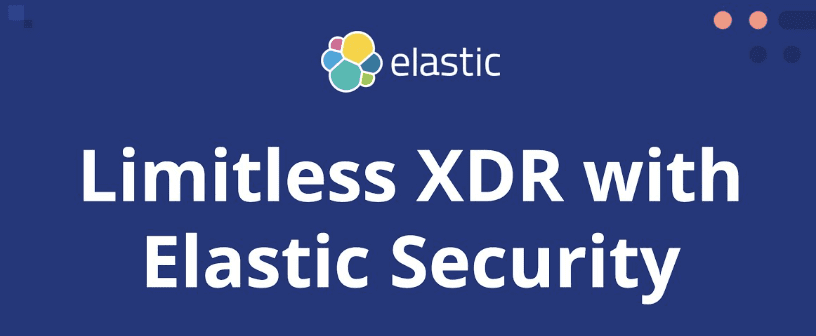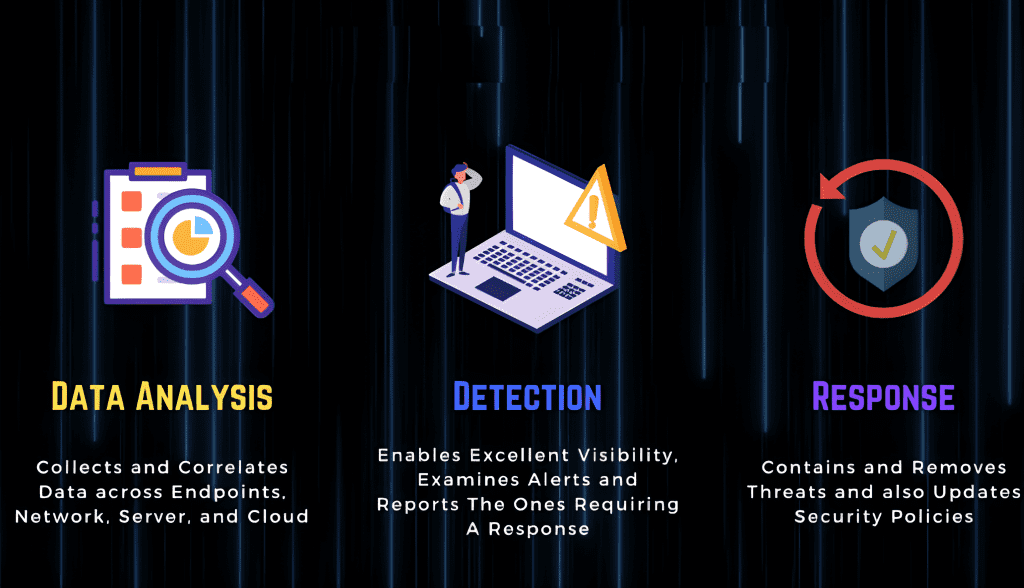Introduction:
Organizations confront increasingly sophisticated and continuous cybersecurity attacks in today’s rapidly evolving digital economy. Traditional safety measures are frequently incapable of detecting and responding to emerging threats. Businesses now have a strong tool at their disposal to boost their cybersecurity posture with the arrival of Elastic XDR (Extended Detection and Response). In this blog article, we’ll look at Elastic XDR’s capabilities and perks, as well as how it may revolutionize comprehensive cybersecurity
Understanding Elastic XDR:
Elastic XDR is a next-generation security solution that goes beyond traditional endpoint detection and response (EDR) to provide comprehensive visibility and threat detection across an organization’s entire infrastructure. It combines the power of SIEM (Security Information and Event Management), EDR, and network security analytics into a unified platform, allowing security teams to proactively detect, investigate, and respond to threats in real-time

Why XDR Is Better Than SIEM And SOC:
XDR (Extended Detection and Response) surpasses SIEM (Security Information and Event Management) and SOC (Security Operations Center) due to its comprehensive visibility across an organization’s digital ecosystem, advanced detection accuracy through machine learning and behavioral analysis, automated response and investigation capabilities, contextual intelligence, consolidation and integration of security functionalities, continuous monitoring and response in real-time, scalability, and flexibility to handle evolving cybersecurity challenges. While SIEM and SOC are still valuable, XDR offers a more proactive, efficient, and effective security approach, enabling organizations to rapidly detect and respond to threats while reducing the risk of successful attacks.
Key Features And Capabilities:
Elastic XDR offers a range of powerful features that enable organizations to uphold their cybersecurity efforts:
- Unified Data Collection and Analysis: Elastic XDR aggregates and correlates data from many sources, including endpoints, network logs, cloud platforms, and apps, to give an in-depth perspective of the security environment. This integrated technique enables complete threat surveillance and incident response.
- Advanced Threat Detection: Leveraging machine learning and behavioral analytics, Elastic XDR can identify patterns and anomalies indicative of malicious activities. It employs sophisticated detection mechanisms, such as user and entity behavior analytics (UEBA) and threat intelligence, to identify both known and unknown threats.
- Real-time Incident Response: Elastic XDR enables security teams to respond swiftly and effectively to security incidents. It provides real-time alerting, automated response actions, and playbook-driven workflows, empowering security personnel to take immediate action to mitigate risks and contain threats.
- Threat Hunting and Investigation: With Elastic XDR, security analysts can conduct proactive threat hunting and investigation. The platform offers powerful search capabilities and visualization tools, allowing analysts to explore large volumes of data and identify hidden patterns or indicators of compromise.
- Scalability and Flexibility: Built on the Elastic Stack, Elastic XDR can scale to accommodate large environments, handling massive volumes of data with ease. It also supports integrations with existing security tools and technologies, allowing organizations to leverage their current investments while expanding their capabilities.
Benefits of Elastic XDR:
Implementing Elastic XDR as part of an organization’s cybersecurity strategy offers several notable benefits:
- Improved Threat Detection and Response: Elastic XDR significantly improves an organization’s ability to identify and respond to security incidents in real time by providing comprehensive visibility and advanced threat detection capabilities, minimizing potential damage and reducing threat dwell time.
- Simplified Security Operations: Elastic XDR’s unified platform and automated response procedures simplify security operations, allowing security teams to work more effectively. The centralized administration and analytics features simplify the management of different security technologies and give a unified view for monitoring and investigation.
- Enhanced Compliance and Reporting: Elastic XDR helps organizations meet regulatory compliance requirements by providing robust audit trails, incident documentation, and reporting capabilities. This not only simplifies compliance efforts but also facilitates effective communication with auditors and stakeholders.
- Cost Efficiency: Consolidating multiple security tools into a single platform eliminates the need for standalone solutions, reducing overall costs associated with licensing, maintenance, and training. Additionally, the scalability and flexibility of Elastic XDR ensure that the solution can grow alongside the organization’s evolving needs, optimizing resource allocation.
Conclusion:
In the face of increasingly sophisticated cyber threats, organizations need comprehensive security solutions that can effectively detect, investigate, and respond to incidents in real time. Elastic XDR offers a powerful solution that combines SIEM, EDR, and network security analytics to provide holistic visibility and advanced threat detection capabilities. By leveraging Elastic XDR, organizations can enhance their cybersecurity posture, streamline security operations, and better protect their digital assets in today’s dynamic threat landscape
Reference Link:
https://www.elastic.co/elastic-stack/features
For further clarifications or support, please write to contact@paradigmitcyber.com


